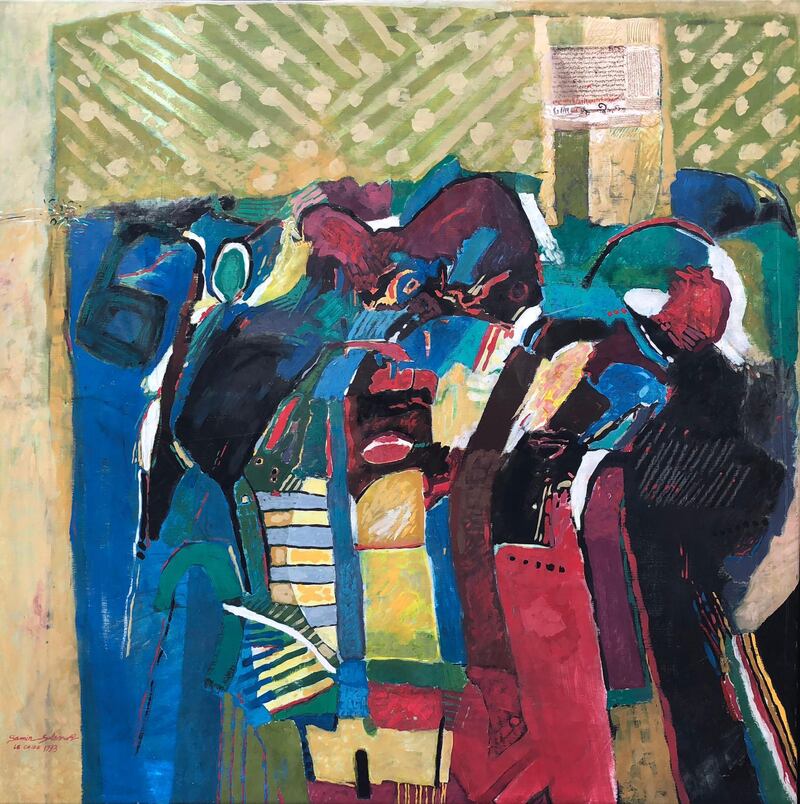Palestinian artist Samir Salameh passed away this month on his birthday, August 16, at the age of 74. He died in Paris, where he had lived for many years, working in the Department of Arab Literature at Unesco.
Salameh was born in Safad, Palestine, and fled the city with his family during the Naqba in 1948, when he was four years old. They settled in the Dira’a Refugee Camp in Syria, and, displaying an early talent for drawing, in 1967 Salameh gained entry to the Damascus Fine Arts Academy. He moved to Lebanon shortly after graduation, and since that time continued to produce and show his works internationally.
Salameh created abstract paintings in which landscape themes predominated, alongside images of struggle and hardship. Despite his subject matter, the bright colours of the works give off a sense of hope: an adumbration of a rainbow appears next to the Dome of the Rock in a 1983 painting of Jerusalem, for example.
“Samir Salameh will be remembered for his congenial and positive spirit which served him well in the face of the adversity over years of exile from his native city of Safad, occupied by Israel since 1948,” says Salwa Mikdadi, a professor of Arab art at New York University Abu Dhabi, who knew the artist and studied his work. “He had an exceptional skill in the use of colour, whether in his abstract expressionist paintings or in his more recent watercolour landscapes, and Safad was always present in his paintings. He will be missed by his many friends in the art world.”
Salameh also played an instrumental role in the Palestinian struggle. After graduating, he worked in the 1970s in Lebanon at the PLO, designing posters for its media office, and helping to structure the Union of Arab Artists. In Paris, where he studied at the Ecole Nationale Superieure des Beaux-Arts, he continued to agitate for the Palestinian cause, successfully challenging his French registration card that listed Safad as a city in Israel. In 2005, when he showed his work for the first time in Palestine, in Ramallah, the Palestinian president Mahmoud Abbas bestowed on him the Order of Culture, Arts and Science.
____________________
Read more:
Naji al-Ali: remembering one of the Middle East's most important cartoonists
Ahed Tamimi: I know I am a symbol of Palestinian resistance
____________________






